
Sometimes I know that I want to make a recipe for a particular seasonal food. This week is one of those times. I had some rhubarb, so began going through my hundred-year-old cookbooks and magazines looking for a rhubarb recipe. I found two that looked like possibilities Rhubarb and Figs and Bread and Rhubarb Pudding. I leaned towards making the Rhubarb and Figs. The Bread and Rhubarb Pudding recipe seemed complicated and I couldn’t quite picture what it would be like. However, my husband said that he didn’t like figs, and my daughter said that she thought the Bread and Rhubarb Pudding sounded awesome, so I decided to give it a try.
I’m glad that my family talked me into making Bread and Rhubarb Pudding. This recipe is a winner. Rhubarb and slices of bread are layered in a baking dish, then a milk, egg, and nutmeg mixture is poured over it. The dish is baked in the oven, and then jelly is spread over it. (I used current jelly – though the old recipe suggested using grape jelly.) I served the Bread and Rhubarb Pudding with whipped cream. The dish definitely was a hit with my family. My daughter said that it had just the right amount of sweetness, and my husband said that I should make it again.
One thing that I’d do differently if I made it again is to try to work a bit more on the presentation. My baking dish and the bread slices that I used when making this recipe didn’t exactly align in size and I had to cut some of the bread slices. If I made it again, I might either use another dish, bread slices that were a different size, or cut every slice of bread (and not just the ones that didn’t fit when whole).

Here’s the original recipe:

I cut the rhubarb into 1-inch pieces; 2 inches seemed a bit long to me. I decided that the egg and milk mixture that is poured over this dish made about enough to cover 8 slices of bread and 4 cups of diced rhubarb.
The recipe called for using sugar in the amount of “half the bulk” of the rhubarb (plus 4 additional tablespoons for the milk mixture). I decided to go with 1 1/2 cups of sugar, which may be a little less than half the bulk, but the Bread and Rhubarb pudding had just the right amount of sweetness so that’s the amount I put in the updated recipe.
I don’t have whole nutmeg, so I used 3/4 teaspoon of ground nutmeg.
I decided to serve with whipped cream rather than going the meringue route.
Here’s the recipe updated for modern cooks:
Bread and Rhubarb Pudding
4 cups rhubarb, cut into 1-inch pieces
1 1/2 cups sugar + 4 tablespoons sugar
8 slices bread (I used white bread.)
butter
1 egg
3/4 teaspoon ground nutmeg
2 cups milk
grape or other flavor of jelly (I used current jelly.)
whipped cream
Preheat oven to 400° F. Put the rhubarb and 1 1/2 cups sugar in a bowl; stir to coat the rhubarb with sugar. Then put half of the rhubarb mixture in a 7 1/2 ” X 12″ X 2″ (or similar sized) baking dish. (The dish I used was about the right size as far as volume goes, but I had to cut some of the bread slices, so if I made it again, I may use a different dish.)
Spread butter on 4 of the bread slices. Arrange the slices (buttered side down) on top of the rhubarb. Then put the remaining rhubarb over the bread slices. Spread butter on the other 4 bread slices, and place buttered side up on top of the rhubarb. Set aside.
Put the egg, 4 tablespoons sugar, and nutmeg in a mixing bowl; beat until smooth. Add milk and beat until combined. Pour the milk mixture over the rhubarb and bread. Cover (I used aluminum foil to cover), and then put in the oven. Bake for approximately 30 minutes or until the rhubarb is tender, and hot and bubbly. (Periodically check on how the baking is coming along. When I made this dish, liquid boiled over and onto my oven while I had the dish covered.)
Once the rhubarb is hot and bubbly remove cover, and continue baking until the bread is lightly browned (about another 10-15 minutes). Remove from oven and spread with jelly. Serve with whipped cream. I served this warm, though it could also be served cold.



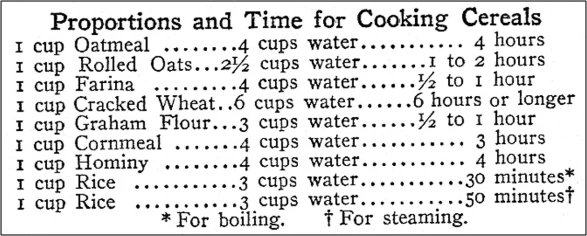
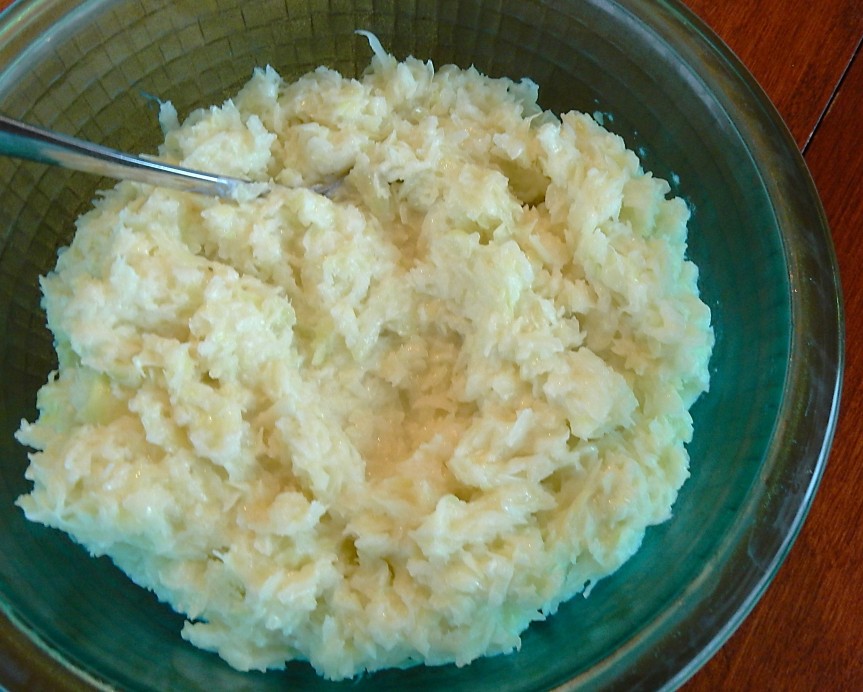
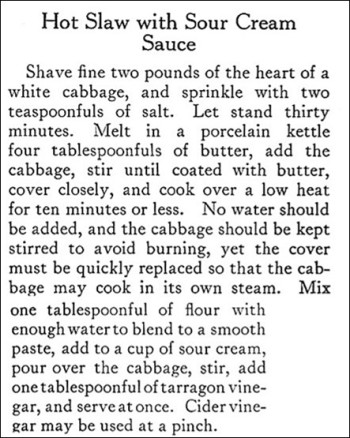
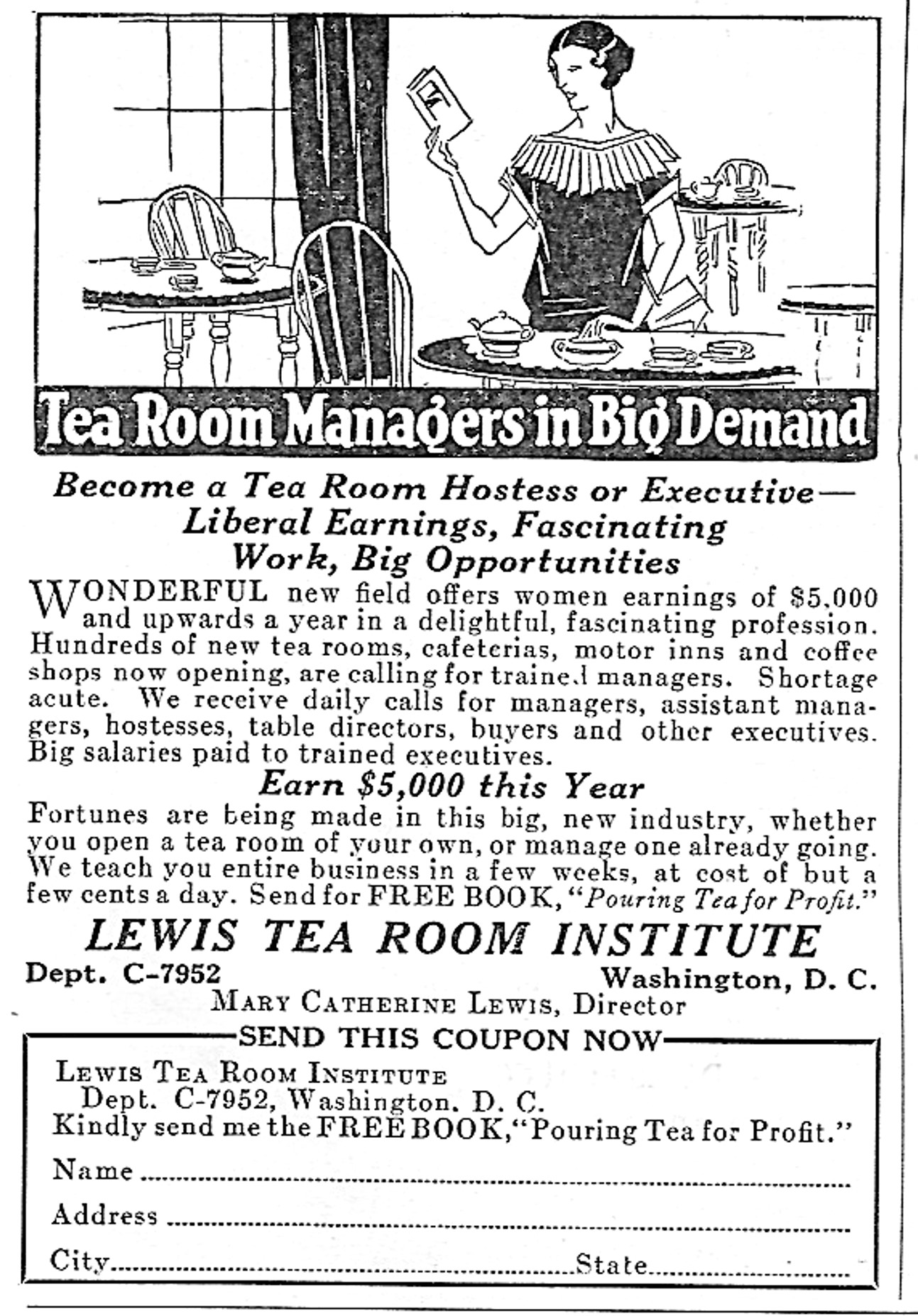
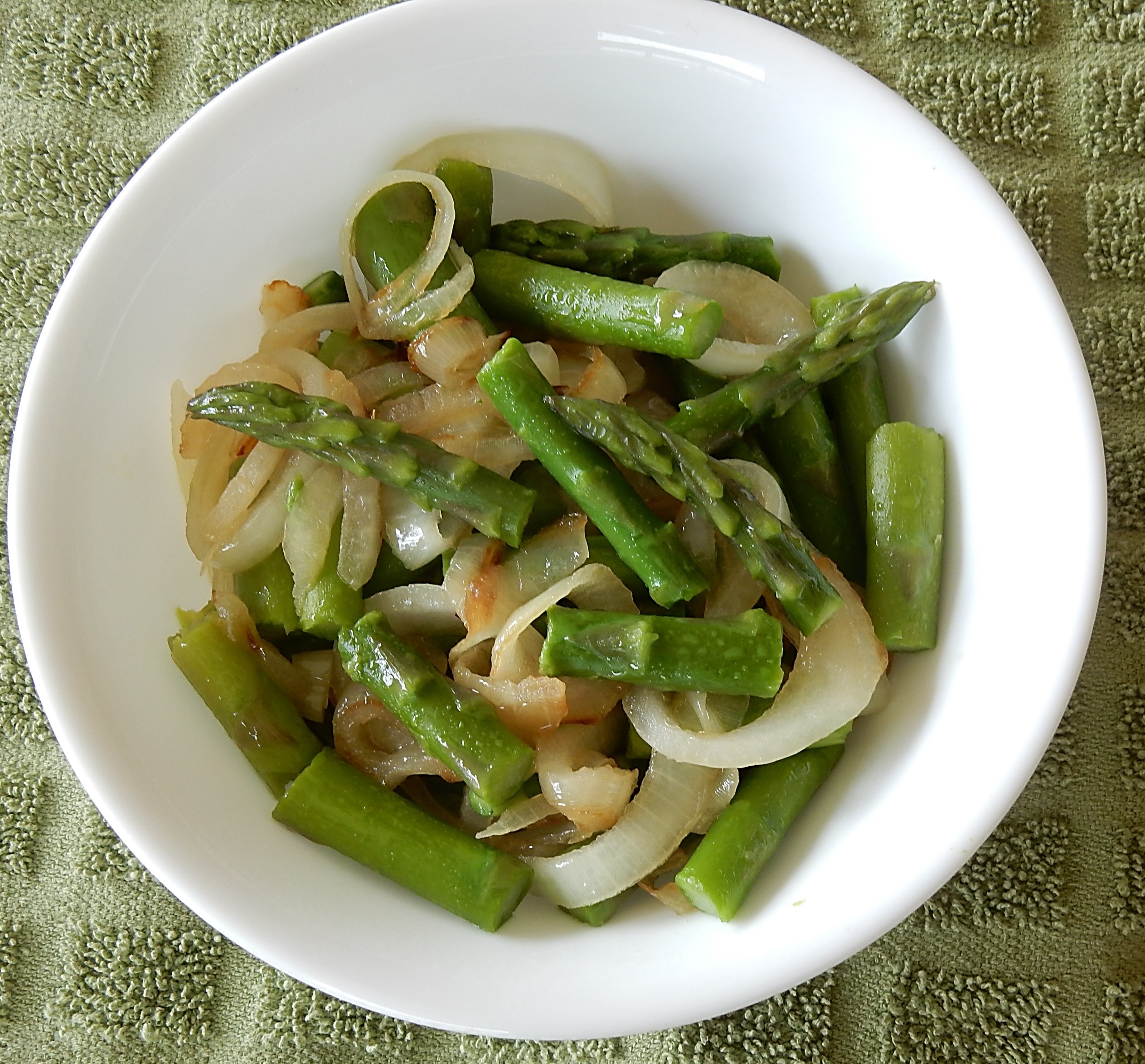 Some recipes in old cookbooks have the strangest titles. For example, I recently came across a hundred-year-old recipe for Tasty Asparagus. In one way the title was very descriptive – it clearly says that the asparagus is tasty. However, in another way, the description is very inadequate. How is the asparagus prepared? What are the main ingredients? I tend to skip over recipes with titles like this, but was intrigued when I saw that this was a recipe for asparagus and onions, and decided to give it a try.
Some recipes in old cookbooks have the strangest titles. For example, I recently came across a hundred-year-old recipe for Tasty Asparagus. In one way the title was very descriptive – it clearly says that the asparagus is tasty. However, in another way, the description is very inadequate. How is the asparagus prepared? What are the main ingredients? I tend to skip over recipes with titles like this, but was intrigued when I saw that this was a recipe for asparagus and onions, and decided to give it a try.